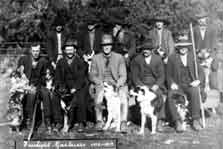Landscape
The new conservation park boundary takes in the southern half of the Eyre Mountains block – heavily glaciated country where cirque basins, scree slopes, alpine tarns, and wetlands are typical. Extensive beech forests, snow tussocklands and very diverse alpine communities make up the ecology of this special portion of northern Southland high country.
Flora
A number of either Eyre Mountains or northern Southland local endemic plant species occur here, due in part to the location between wet and dry rainfall zones. Amongst these are a number of mountain daisies (Celmisia spp.), mountain buttercups (Ranunculus spp.), speargrasses (Aciphylla spp.), forget-me-nots (Myosotis spp.), hebe and pimelia species.
There are also another nine known nationally threatened and uncommon alpine plant species in the area. The threatened tree daisies Olearia hectorii and Olearia lineata, along with rare grasses, sedges and mistletoe, also inhabit the area.
Other natural features
- A number of plant species at their eastern, western or southern distribution limits
- The existence of ultramafic volcanic soils and associated endemic vegetation in the south west of the park at West Dome. These soils only appear again in South Westland and Nelson in the South Island
- A number of rare and endangered bird species including the only known population of piwauwau/rock wren outside the Southern Alps/Ka Tiritiri o te Moana
- A widespread population of karearea/falcon kea, kereru/wood pigeon and kakariki/yellow-crowned parakeet
- Some unique invertebrate fauna such as the declining giant Speden’s land snail Powelliphanta spedeni var spedeni, the giant Speden’s speargrass weevil and a stronghold for the ‘inch and half ground beetle Mecodema chiltoni
- A good variety of lizard species, both geckos and skinks
- Healthy river habitat for at least six species of native fish including; the Alpine galaxias (uncommon in Southland and Otago); the Southern flathead galaxias (only found in Southland and Stewart Island/Rakiura) and Gollum galaxias.
History
The Eyre Mountains/Taka Ra Haka have long attracted the Māori, European explorer, pastoralist and preservationist.
Māori named the area Taka Ra Haka in reference to the sun setting or dancing on the mountain tops at the end of the day. The Eyre Mountains were named by Captain J.L. Stokes of the Acheron survey (1848 – 51) after the explorer Edward John Eyre. Eyre was appointed Lieutenant-Governor of New Zealand from 1848 – 53 for the lower North Island and the whole of the South Island.
Southland’s major rivers such as the Waiau, Mataura, Oreti and Clutha were all used by early Māori as pathways to reach the resources of the interior. Southern Māori travelled into the Eyre Mountains following the Oreti River from its mouth at Omaui – Foveaux Strait/Te Ara a Kiwa to its upper reaches, on route to Lake Wakatipu and South Westland. The Upper Mataura River was also followed as part of a trail from the south through to Central Otago and beyond.
Māori moved through the area in search of food and to locate sources of stone such as the precious Pounamu/greenstone and Argillite, highly valued for tool making. Māori have held cultural and spiritual connections to the Eyre Mountains landscape, from the earliest ventures of the Waitaha and Katimamoe people, through many generations to the present day Ngāi Tahu, who will have an active role in the ongoing management of the park.

Fairlight Station staff
Early sheep farmers were not deterred by this rugged landscape and major pastoral runs were established across Northern Southland in the late 1850s and 1860s. Stations such as Fairlight, Cainard and Mt. Nicholas have strong historical links to this environment where old musterers’ huts remain to tell some of the story of the high country farming life. Beech Hut, built about 1913 in the Upper Mataura, is one of the oldest musterers’ huts in Southland. Along with the Dog Box Hut situated in Eyre Creek, they were part of a network of mustering huts across the Eyre Mountains and these now provide the tramper with a unique historical experience.
The former New Zealand Forest Service, Department of Lands and Survey and now Department of Conservation have all played key roles in protecting natural values in the Eyre Mountains. Intensive wild animal control efforts began in the 1970s in what was then State Forest Park and a myriad of tracks and huts were created in response to this cause. Much of the higher country was eventually retired from pastoral grazing and the initial protected area expanded to better represent the diverse values of the landscape. This has lead to the formation of today’s Eyre Mountains/Taka Ra Haka Conservation Park.